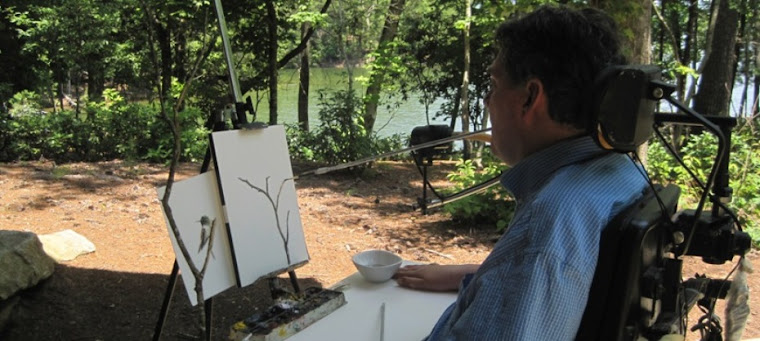
For the next few weeks, this space will be an exploration - the back and forth of question and answer sessions with Marcus. He will honestly and authentically address any question put forth in good faith.
You, dear reader, are invited to submit your questions for the artist below in the comments.
The first of entry to the Q&A series is:
What are the limitations of being a quadriplegic painter? Are there some things you just can't do artistically?
Marcus says:
I am always trying to defy the odds. It amplifies the excitement and fuels my passion. So, instead of thinking about limitations, I "dwell in the possibilities." The deeper I explore the possibilities of my tools - the paint/brush - the more the idea of limitation fades.
Sure, there is a practical size constraint. Large is not strategically sound and involves unfair demands outside of my control. Accordingly, I strive to create modest size paintings that hopefully contain a lasting, large, voice.
Keeping to a modest size does not eliminate the need for assistance but does reduce it.
Painting various segments of any given scene requires the raising and lowering of the easel for my brush as well as rotating the painting surface itself. The perspective provided by rotation helps with accurate drawing, plus also allows a broader reach with the brush. If a painting looks good upside down, the possibilities are endless!
 "Theirs is not to reason why, Theirs but to do and die." - from "Charge of the Light Brigade" by Alfred Lord Tennyson
"Theirs is not to reason why, Theirs but to do and die." - from "Charge of the Light Brigade" by Alfred Lord Tennyson

